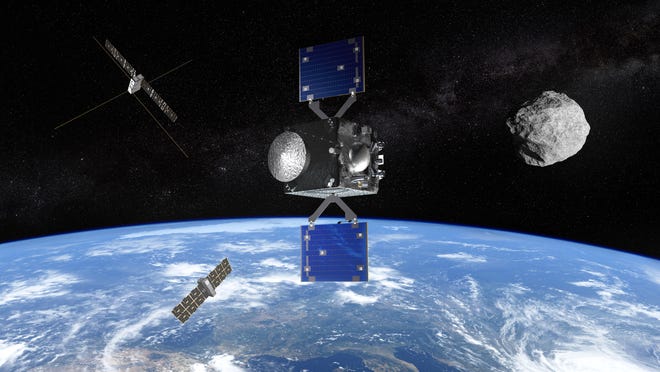Time A huge asteroid passes close to Earth In a few years, a space mission will be ready to meet and greet the big rock from a distance ten times closer than the moon.
The European Space Agency announced Tuesday that a spacecraft called Ramses is preparing to “rendezvous” with an asteroid the size of a cruise ship that is expected to come within just 19,900 miles of Earth in 2029. Scientists say it’s extremely rare for an object the size of an asteroid to come so close to Earth, and likely won’t happen again for the next 5,000 to 10,000 years.
Scientists have ruled out the possibility of asteroid Apophis colliding with Earth during its “very close pass by the planet,” but researchers have warned that encounters with more dangerous asteroids are possible in the future. The aim of the Ramses mission is to gather data on giant asteroids and learn how to protect Earth in the future, the European Space Agency said.
“Researchers will study how Earth’s gravity changes the asteroid’s physical properties,” the agency said. “Their findings will improve our ability to protect Earth if we find a similar object on a future collision course.”
An ‘extremely rare’ giant asteroid
The giant asteroid Apophis, named after the ancient Egyptian god of disorder, is about a quarter-mile long and will be visible to the naked eye when it passes by Earth in April 2029, scientists said.
The Ramses spacecraft, launched a year ahead of schedule, will accompany Apophis before it passes Earth and then part way out of Earth’s orbit. During that time, the mission will observe how the asteroid’s surface changes as it gets so close, said Patrick Michel, research director at the French National Center for Scientific Research.
“All we have to do is watch as Apophis gets stretched and compressed by strong tidal forces, causing landslides and other disruptions that bring new material out from beneath the surface,” Michel said.
Apophis will be visible in clear skies across Europe, Africa and parts of Asia, but will “capture the global spotlight” in April 2029, according to the European Space Agency (ESA).


